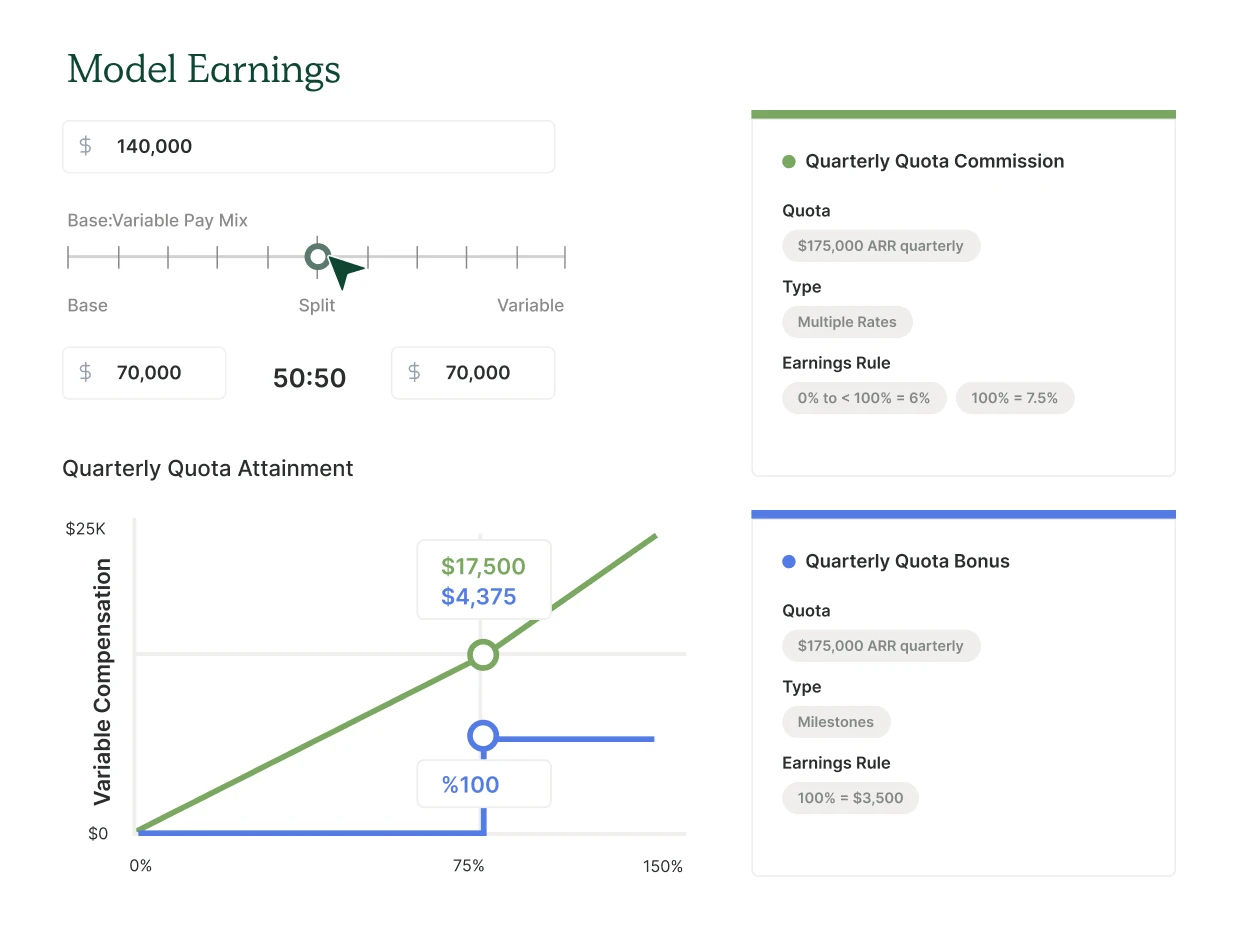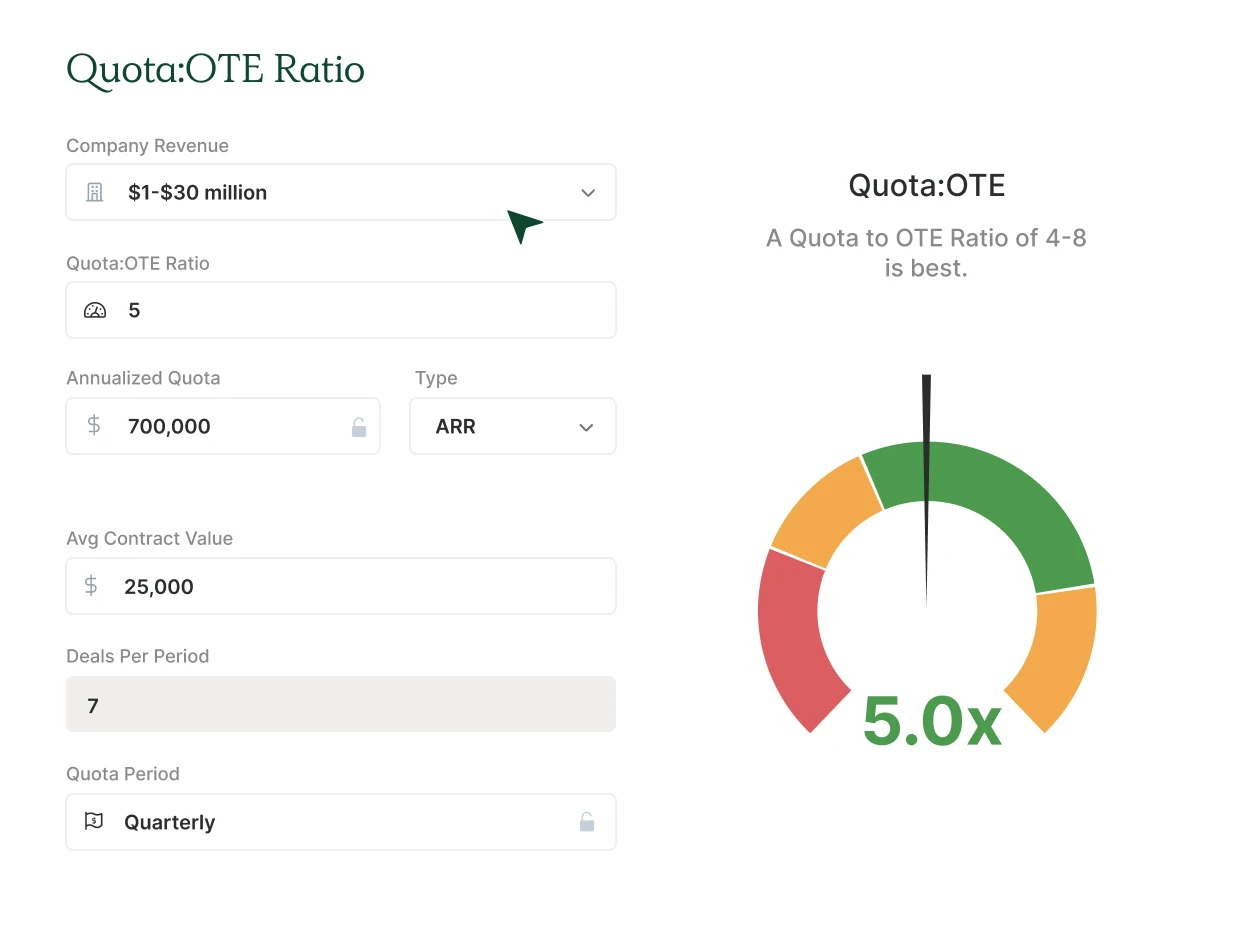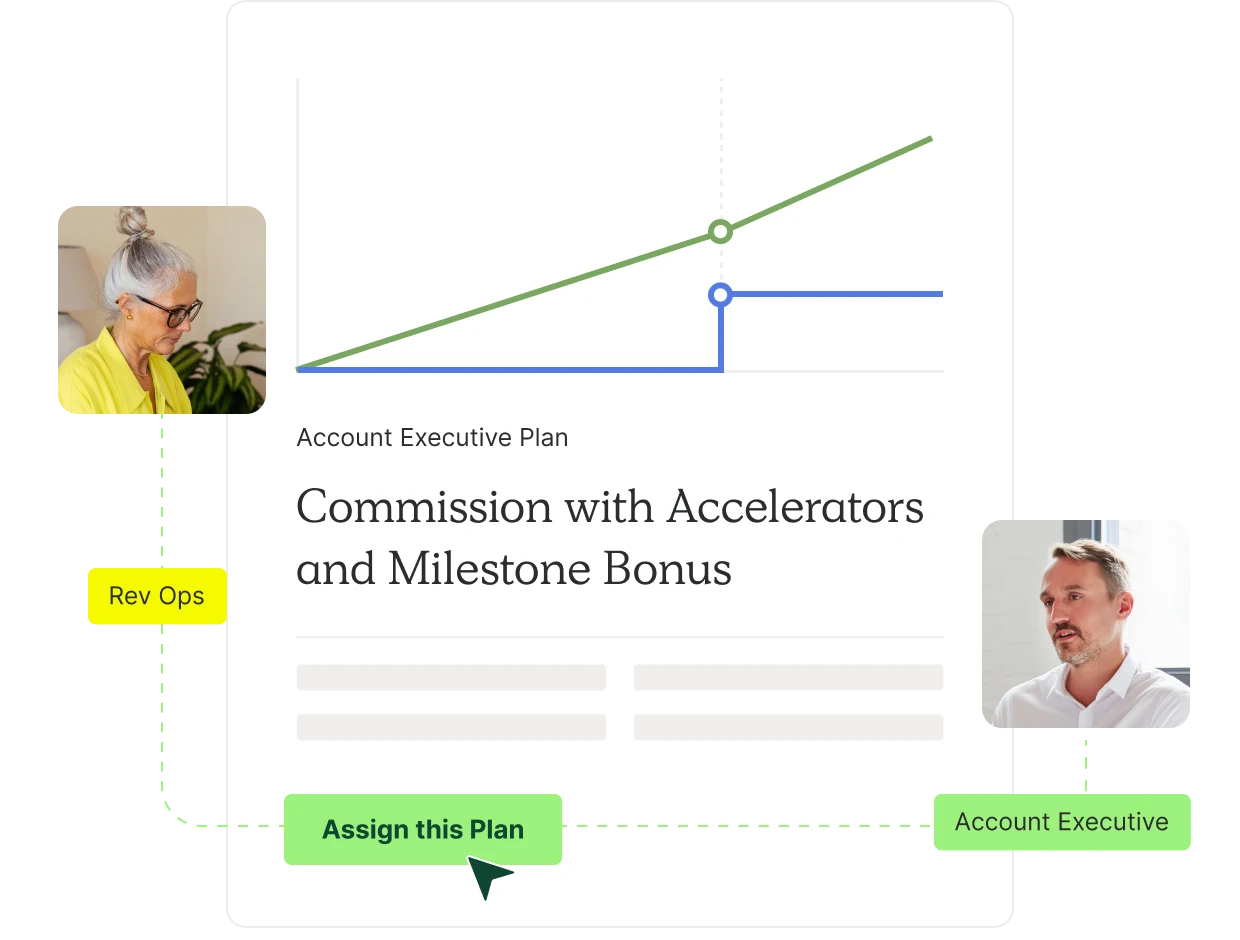Limited inventory or need to throttle growth
Milestone Bonus
We recommend pairing this plan with the Single Rate Commission template, since this plan can lead to sandbagging if left alone. However, since the rep only earns the bonus upon achieving quota, it does encourage quota consistency.

When to use this plan?
Why use a Milestone Bonus plan?
Low financial cost and removes risk of inflated commissions
Customize the Commission with Milestone Bonus Plan Template
Like this plan? Sign up for QuotaPath for free to add your business inputs and adjust the variables.
Forecast earnings & plan performance
See potential earnings based on your inputs and goal attainment progress.

Check the health of your Quota:OTE ratio
Use the calculator to quickly measure how realistic, attainable, and healthy your OTE to quota ratio is.

Streamline plan management
Assign the plan to your team and automate sales commission calculations. Be confident your team is being paid fairly and accurately.

How to adjust this compensation plan template
To customize this plan, you will input these 7 variables.
On-Target Earnings (OTE)
OTE combines base salary with variable pay and represents the total amount of money your reps can expect to earn if they hit 100% of quota.
Pay Mix
Refers to the percentage of a salesperson’s total compensation, made up of base salary, commission, and other incentives. The most common pay mix in SaaS is 50/50.
Company Revenue
Revenue is the total amount of income that a company generates from its primary operations. In SaaS, annual recurring revenue is one of the most important metrics.
Quota:OTE Ratio
This ratio quantifies how much larger a quota is to a sales rep’s OTE. The most common multiplier in SaaS is a quota 5x that of the OTE, but this will vary based on size and stage of the company.
Annualized Quota
An annualized quota is a sales goal that is set for a year.
Average Contract Value
Often abbreviated to ACV, this number represents the average deal size that your company sells.
Quota Period
Your quota period sets the frequency at which your team’s quota resets. In SaaS, the most common quota period is quarterly. However, this number will vary based on your sales cycle.
Frequently asked questions
Why would I only include a milestone bonus in my comp plan?
The major reason to have your compensation plan be exclusively 1 milestone bonus is if you have a specific bar that you’re trying to have your reps hit. You don’t care about them overachieving. The only thing that matters is that they hit their quota every month/quarter/year. If that is the case for you, a milestone bonus could be fitting.
What is the point of a milestone bonus?
Milestone bonuses are typically paired with a commission path in order to encourage reps to hit some certain target. If you include a milestone bonus with your commission rate, this removes some of the concern of sandbagging and rep dissatisfaction.
What is a milestone bonus?
In sales compensation, a milestone bonus is earned when the rep meets designated stipulations and is paid a set amount. These bonuses do not vary if the rep is below or above these requirements. Meaning, anything less than the quota, and the rep earns nothing. And, for any deals that come in after hitting the quota target within the quota period, the rep would not earn any additional bonuses.
What’s the difference between sales commissions and bonuses?
The difference between commissions and bonuses is that bonuses are based on a set amount of money you earn for doing a specific task. Commissions, on the other hand, are a percentage of a revenue number you earn for closing a deal. For example, If a rep gets 20% of every deal closed, that’s commission. If a rep collects $200 for every deal they close, that’s a bonus.
Is this plan too complex?
This commission plan’s complexity (or lackthereof) is right up there with the Single Rate Commission plan. The milestone bonus and single rate commission plans both include flat amounts or commission rates. Some would argue the milestone bonus plan is even simpler because the rep can only earn a set amount if and only when they hit quota. In both cases, the math is simple to calculate and easy for reps to understand.
Explore similar compensation plans

Commission with Accelerators & Milestone Bonus
If you’re looking to incentivize consistency and have higher velocities of sales, then this is the plan for you.

Single Rate Bonus (Quantity)
The perfect compensation structure when you have consistent deal values, like in solar or telecom.

Multiple Rate Bonus (Revenue)
Good for high seasonality businesses.
What industry leaders say
Manage compensation & track commissions with QuotaPath
Deliver visibility, automation, and seamlessness across the entire compensation process.